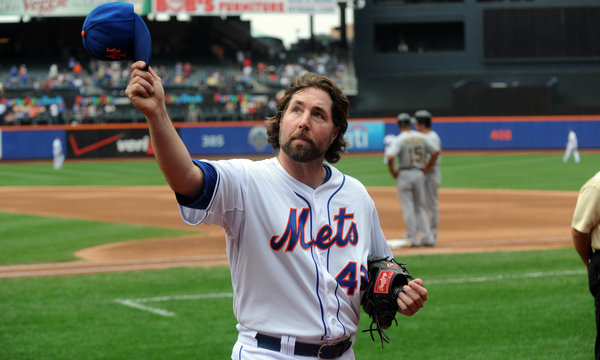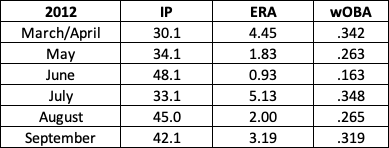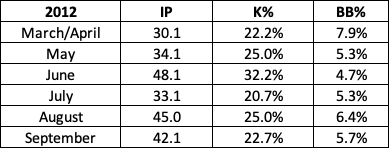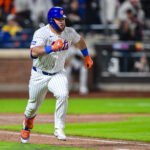
When we think of Cy Young awards and New York Mets pitchers, the first guy that likely comes to mind these days is Jacob deGrom — winning two in a row will do that.
He’s not the only Mets hurler to take home those honors in the past decade, of course — R.A. Dickey accomplished the feat while deGrom was in High-A.
There’s no point in comparing the two because the sample sizes — and results — are incredibly lopsided. For example, deGrom has won just 21 games over the past two seasons, while his performance has been worth 16.0 fWAR. As for Dickey, his magical performance led to nearly as many wins (20) and not nearly as much fWAR (4.7). But DeGrom put together some historically dominant stretches en route to winning this award twice, and the same was true for Dickey.
After all, it’s difficult to post a 20-6 record with a 2.73 ERA, a 3.25 SIERA, and a 1.05 WHIP in 233.2 innings without wiping the floor with the opposition with some form of regularity. The knuckleballer threw at least 30 innings in each month of the 2012 season and posted an ERA south of 3.20 on four occasions. Upon looking at his splits, though, there was one specific stretch where he was mostly untouchable, which likely helped propel him to winning the award: the month of June.
Anyway you slice it, the 48.1 frames Dickey tossed in June was just off the chain, and head-and-shoulders better than any other month during this year-long campaign.
The ERA Ride
Here’s a peek at how Dickey’s monthly ERA and wOBA allowed progressed each month.

It’s not surprising that his four highest monthly innings pitched totals all came in the instances where his ERA was below that 3.20 mark. I mean, when you pitch well, you get to pitch deeper in games.
June sticks out because it’s the highest total. No other qualified starter in baseball threw more innings than Dickey during that 30-day span, and nobody posted an ERA lower than him. He also led the league with 2.0 fWAR, meaning about 43.0% of his year-end fWAR total came in approximately 20.0% of the work.
Of the six starts Dickey made, he threw fewer than seven innings just once, which came on June 24th against the New York Yankees when he allowed five runs in six innings. The other five starts? He allowed just one run, and it wasn’t even an earned run. This stretch also included three of his five complete-game efforts for the entire year: a seven-hit shutout against the St. Louis Cardinals on June 2nd and consecutive one-hitters against the Tampa Bay Rays and Baltimore Orioles on June 13th and June 18th, respectively.
The Strikeout and Walk Rate Progression
When looking at how Dickey’s strikeout and walk numbers progressed throughout the season, it shows a build-up to June and a gradual drop afterward, for the most part.

Once again, that June start against the Yankees stands as the outlier during an other-worldly stretch of success. Dickey struck out just three in that appearance, and it was the only time he exited a June start with fewer than eight punchouts.
He piled up a total of 25 during those consecutive one-hit complete games and finished off the month with 10 against the Los Angeles Dodgers in eight innings on June 29th. The knuckler piled up seven different single-game performances of 10-plus strikeouts, meaning just about half of them came in a four-start stretch.
Dominating Quality of Contact
Obviously, the tricky part about throwing a knuckleball is it has a mind of its own. Dickey can have a good feel for the pitch, but even he didn’t know exactly what the ball would do given the conditions he was throwing it in. Once again — as if there was any surprise — June stands out as the best stretch for him with regard to managing the contact of opposing hitters.
Here’s a look at how the batted-ball profile shook out each month.

I looked at this for a couple minutes and tried to pick just one June rate that really stuck out, but it’s impossible. All of them put together is just so crazy. With the rate at which he was inducing ground balls and limiting hard contact, giving up just one home run was basically expected.
When using FanGraphs’ Game Score statistic as the measuring stick, four of his six June starts are classified as his best single-season performances from 2012.
Would he have still won the Cy Young if this month was more in line with what he did in other months? Maybe, but who knows. Either way, it’s easy to see that this stretch of domination is what propelled him to an easy victory in the voting, taking home 27 of 32 first-place votes.















